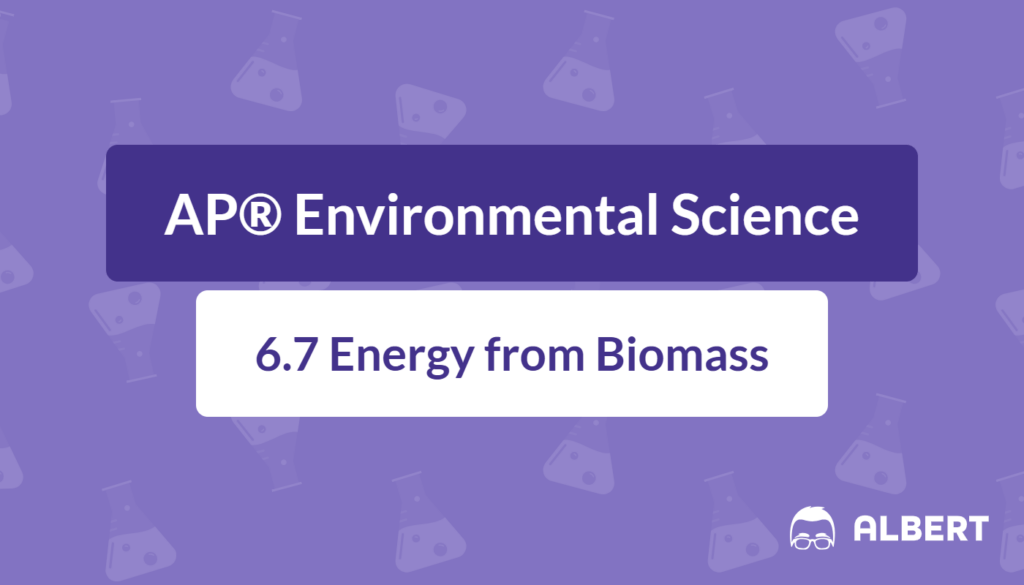What We Review
Introduction
Biomass energy has gained considerable attention as nations look toward more sustainable energy sources. Because it taps into organic materials such as crop residues, wood, and animal waste, biomass is often called a “renewable” energy resource. However, understanding how biomass energy is produced and how it affects the environment is essential for informed decision‑making. Knowing the benefits, drawbacks, and real‑world applications clarifies biomass energy’s position in the broader conversation about renewable energy options.
This review unpacks the fundamental concepts behind biomass energy. It covers biomass, how it is converted into usable power, and the environmental trade‑offs accompanying its production. You will gain a balanced perspective on the complexities of biomass energy before reviewing more advanced topics in renewable energy policy and sustainability.
What Is Biomass Energy?
Biomass energy is a form of renewable energy derived from plant or animal materials, including agricultural leftovers and organic waste. Unlike fossil fuels, which take millions of years to form, biomass resources can be replenished over a much shorter time frame. As a result, biomass is often touted as “carbon neutral,” because the carbon dioxide emitted during biomass combustion can be offset by new plant growth that absorbs \text{CO}_2.
Still, the carbon neutrality concept remains controversial. Although energy from biomass sources can potentially reduce dependence on non‑renewable fuels, one must also consider how these sources are harvested, processed, and combusted. Therefore, analyzing the complete lifecycle of biomass is critical for understanding its overall environmental impact.
Sources of Biomass
Many substances can serve as biomass feedstocks:
- Plant materials: Wood, switchgrass, and crop residues.
- Agricultural waste: Stalks, husks, and other leftover plant parts from harvests.
- Animal waste: Livestock manure that can be broken down to produce biogas.
These sources differ in availability, energy density, and ease of collection. Consequently, regions with abundant forestry or agriculture may find biomass an attractive local energy source.

How Biomass Is Converted to Energy
Biomass can be converted into electricity, heat, and even transportation fuels through:
- Direct combustion (burning biomass to produce heat and steam).
- Anaerobic digestion (using bacteria in low‑oxygen environments to create biogas).
- Fermentation (breaking down sugars to produce biofuels such as ethanol).
Each process has varying equipment and environmental requirements. Therefore, the method of choice depends on feedstock properties, scale of production, and overall cost considerations.
The Process of Using Biomass for Energy
Producing energy from biomass follows several key steps. Understanding these steps helps illustrate why some approaches are more appropriate in certain areas than others.
Step‑by‑Step Explanation
- Collection of Materials. First, biomass materials are gathered from farms, forests, or processing sites. For instance, sawdust from a lumber mill or crop residues from nearby farms might be transported to a biomass power plant.
- Pre‑Treatment or Processing. Next, the feedstock is treated to facilitate energy conversion. This step may involve grinding, drying, or mixing different biomass sources together.
- Conversion Methods. Then, the biomass goes through a primary conversion method. For example, direct combustion turns solid biomass into heat to boil water for electricity generation. Alternatively, anaerobic digestion of organic waste can yield biogas, which is cleaned and used in turbines for power production.
- Energy Production and Distribution. Finally, the energy (electricity, heat, or biofuel) is put to use. Power plants feed electricity into the grid, heat is channeled for industrial processes, and biofuels are transported to fueling stations.
Throughout these stages, efficiency and environmental regulations play major roles. Consequently, facilities must invest in pollution control measures to lower harmful emissions.
Environmental Effects of Biomass Energy
Burning biomass to generate power can produce pollutants similar to those from fossil fuels. Therefore, it is critical to evaluate emission types and their impact on ecosystems and human health.
Emissions of Pollutants
- \text{CO}_2. When biomass is combusted, carbon dioxide is released. Although plants recapture \text{CO}_2 through photosynthesis, an imbalance can occur if harvesting outpaces replanting.
- Carbon Monoxide. Produced by incomplete combustion, carbon monoxide can pose serious toxicity risks if ventilation is poor.
- Nitrogen Oxides. During combustion at high temperatures, nitrogen in the air or in the fuel forms \text{NO}_x. These compounds contribute to smog and acid rain.
- Particulates. Tiny solid particles suspended in the air can enter the lungs, potentially causing respiratory issues.
- Volatile Organic Compounds. Organic chemicals released during combustion or storage contribute to ground‑level ozone formation and air pollution.
Because of these emissions, overreliance on biomass can lead to notable air quality concerns. Therefore, refining technologies, choosing cleaner feedstocks, and enacting strict regulations become pivotal steps for reducing pollution.
Deforestation Concerns
In regions where wood is a primary or traditional biomass source, overharvesting can drive deforestation if replanting efforts do not keep pace. Deforestation reduces biodiversity, depletes soil nutrients, and increases erosion. Moreover, the loss of tree coverage hinders carbon sequestration and can result in a net increase in \text{CO}_2 levels over time. Consequently, sustainable forest management is vital when using wood‑based biomass at scale.
Comparison with Fossil Fuels
Compared to coal or petroleum, biomass can offer advantages if it is used under controlled, sustainable conditions. For instance, biomass energy systems can be cleaner, since they often emit fewer heavy metals and sulfur compounds. Furthermore, they reduce dependence on fossil fuels by turning local waste into valuable energy. However, excessive reliance on biomass—particularly in regions lacking efficient management—can generate pollution problems and negatively affect habitats. Due to these mixed outcomes, balancing biomass with other renewables remains essential.
Ethanol as a Biomass Energy Source
Biofuels such as ethanol are commonly derived from corn, sugarcane, or cellulosic materials. Because ethanol can substitute part of traditional gasoline, many countries blend a percentage of ethanol into their fuel supply. When ethanol combusts, it primarily releases \text{CO}_2 absorbed during the growth of the feedstock, so it does not introduce large additional carbon loads into the atmosphere. However, it is crucial to assess the total energy expenditures associated with growing, harvesting, and processing feedstocks.
Benefits and Drawbacks
Ethanol offers certain benefits:
- Potential for lower greenhouse gas emissions compared to fossil fuels.
- Supports local agriculture by creating new markets for crops.
- Reduces oil dependence, thereby diversifying fuel sources.
On the other hand, ethanol production can require more energy than it yields. The term used to express this ratio is energy return on energy investment, or EROEI. Calculating EROEI involves summing all the energy inputs used in producing a fuel, then comparing that to the energy the fuel provides when it is consumed. Mathematically, it can be expressed as:
\text{EROEI} = \frac{\text{Energy obtained from ethanol}}{\text{Energy expended to produce ethanol}}If the ratio is too low, ethanol might not be a worthwhile energy source on a large scale. Additionally, channeling agricultural land toward fuel production rather than food crops can raise ethical and economic concerns.
Case Study: Biomass Energy in Action
An example of biomass energy application can be found in a municipal waste‑to‑energy facility that uses organic components of urban and agricultural waste. Such a power plant might function as follows:
- Waste Collection and Sorting. The facility gathers organic waste (e.g., food scraps, grass clippings) and separates it from recyclable materials like glass and metals.
- Anaerobic Digestion Tanks. Next, the organic waste is placed in sealed chambers where bacteria break it down in low‑oxygen conditions. This process generates biogas, primarily methane, which can be collected.
- Biogas Combustion. Once purified, the methane is burned in turbines to produce electricity. Excess heat from the combustion process may also be used for local heating, thereby improving overall efficiency.
- Emissions Management. Finally, the facility includes filters or scrubbers that remove \text{NO}_x, particulates, and other emissions before releasing exhaust into the atmosphere.
To quantify the environmental impact, plant operators perform lifecycle analyses. These analyses check net greenhouse gas output, measuring both the positives (reducing landfill waste) and the negatives (pollutant emissions). Consequently, local governments can determine if the benefits—energy generation and reduced waste—outweigh any remaining pollution concerns.
Conclusion
Biomass energy is a compelling component of the renewable energy portfolio. Under the right conditions, it can lower reliance on fossil fuels, support rural economies, and offer a method for converting waste into electricity. Moreover, careful resource management helps stabilize carbon contributions by replanting forests and mitigating overharvest. However, burning biomass still generates harmful emissions, such as carbon monoxide, nitrogen oxides, and volatile organic compounds. Additionally, deforestation and land‑use changes can undermine the environmental benefits of biomass if not controlled responsibly.
Therefore, students examining biomass energy should consider the entire lifecycle—from planting and harvesting to conversion and emission control. Future developments in feedstock production, conversion technologies, and combined heat and power systems might raise the efficiency and reduce the environmental drawbacks. In doing so, biomass energy can complement other renewable sources, contributing to a balanced and sustainable energy strategy.
Key Vocabulary
- Biomass: Organic material from plants and animals used to produce energy.
- Carbon Dioxide (CO₂): A greenhouse gas emitted during the burning of fossil fuels and biomass.
- Carbon Monoxide (CO): A toxic gas created when carbon‑based fuels do not burn completely.
- Nitrogen Oxides (NOx): Pollutants formed during combustion that can contribute to smog and acid rain.
- Volatile Organic Compounds (VOCs): Organic chemicals that can vaporize and pollute the air near ground level.
- Ethanol: An alcohol‑based biofuel produced from biomass (e.g., corn or sugarcane) that can be blended with gasoline.
Sharpen Your Skills for AP® Environmental Science
Are you preparing for the AP® Environmental Science test? We’ve got you covered! Try our review articles designed to help you confidently tackle real-world AP® Environmental Science problems. You’ll find everything you need to succeed, from quick tips to detailed strategies. Start exploring now!
- AP® Environmental Science: 6.4 Review
- AP® Environmental Science: 6.5 Review
- AP® Environmental Science: 6.6 Review
Need help preparing for your AP® Environmental Science exam?
Albert has hundreds of AP® Environmental Science practice questions, free response, and full-length practice tests to try out.








